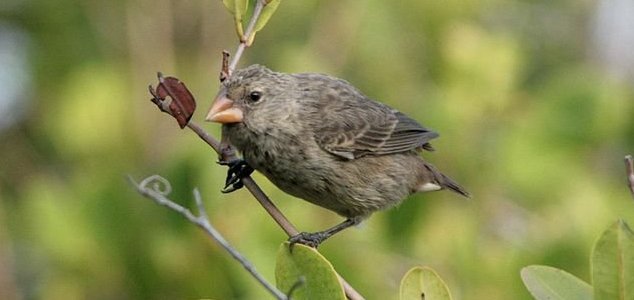Nature & Environment
November 25, 2017 · 9 comments
9 comments

Galapagos finches are also known as Darwin's finches. Image Credit: CC BY-SA 4.0 RuyCalderon
In 1981 the large cactus finch - a visitor to the island - fathered fertile young with one of the native finch species and now, over three decades later, this bird's progeny number around 30 individuals.
These new finches are now sufficiently different from the original native finches to be considered a new species, meaning that they have arisen within a mere two generations.
What's more, for the first time, scientists have had front row seats to the entire thing.
"It's an extreme case of something we're coming to realize more generally over the years," said Professor Roger Butlin. "Evolution in general can happen very quickly."
Source: BBC News | Comments (9)
Scientists observe bird evolving in real time
By T.K. RandallNovember 25, 2017 ·
 9 comments
9 comments
Galapagos finches are also known as Darwin's finches. Image Credit: CC BY-SA 4.0 RuyCalderon
For the first time ever, it has been possible to directly observe one species evolving in to another.
For decades, researchers have been observing the entire population of finches on the small Galapagos island of Daphne Major which has long served as a haven for wildlife.In 1981 the large cactus finch - a visitor to the island - fathered fertile young with one of the native finch species and now, over three decades later, this bird's progeny number around 30 individuals.
What's more, for the first time, scientists have had front row seats to the entire thing.
"It's an extreme case of something we're coming to realize more generally over the years," said Professor Roger Butlin. "Evolution in general can happen very quickly."
Source: BBC News | Comments (9)

The Unexplained Mysteries
Book of Weird News
AVAILABLE NOW
Take a walk on the weird side with this compilation of some of the weirdest stories ever to grace the pages of a newspaper.
Click here to learn more

Support us on Patreon
BONUS CONTENTFor less than the cost of a cup of coffee, you can gain access to a wide range of exclusive perks including our popular 'Lost Ghost Stories' series.
Click here to learn more
Israel, Palestine and the Middle-East
Ghosts, Hauntings and The Paranormal
Ancient Mysteries and Alternative History
United States and the Americas
Total Posts: 7,607,238 Topics: 316,434 Members: 201,851
Not a member yet ? Click here to join - registration is free and only takes a moment!
Not a member yet ? Click here to join - registration is free and only takes a moment!




























Please Login or Register to post a comment.